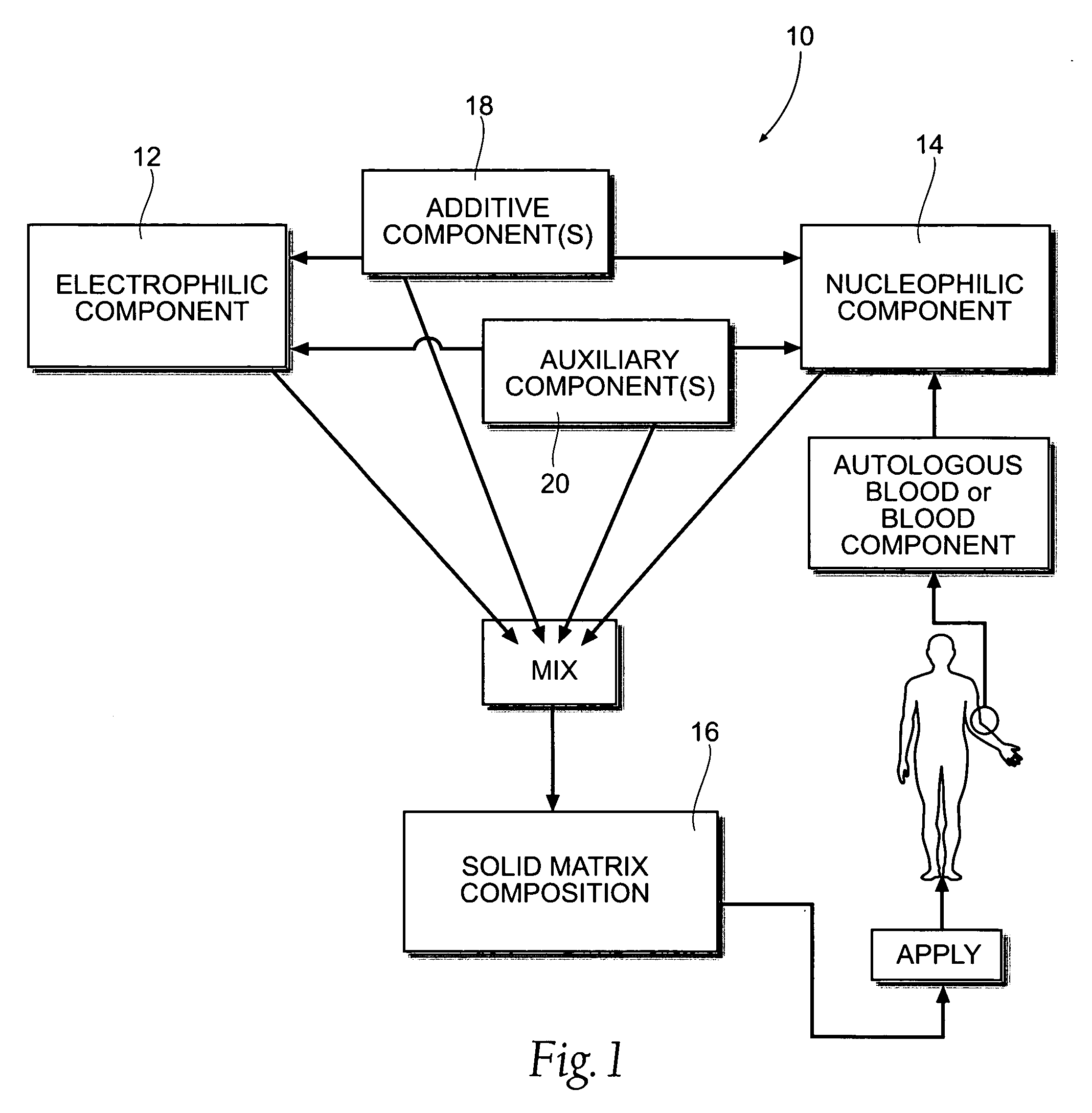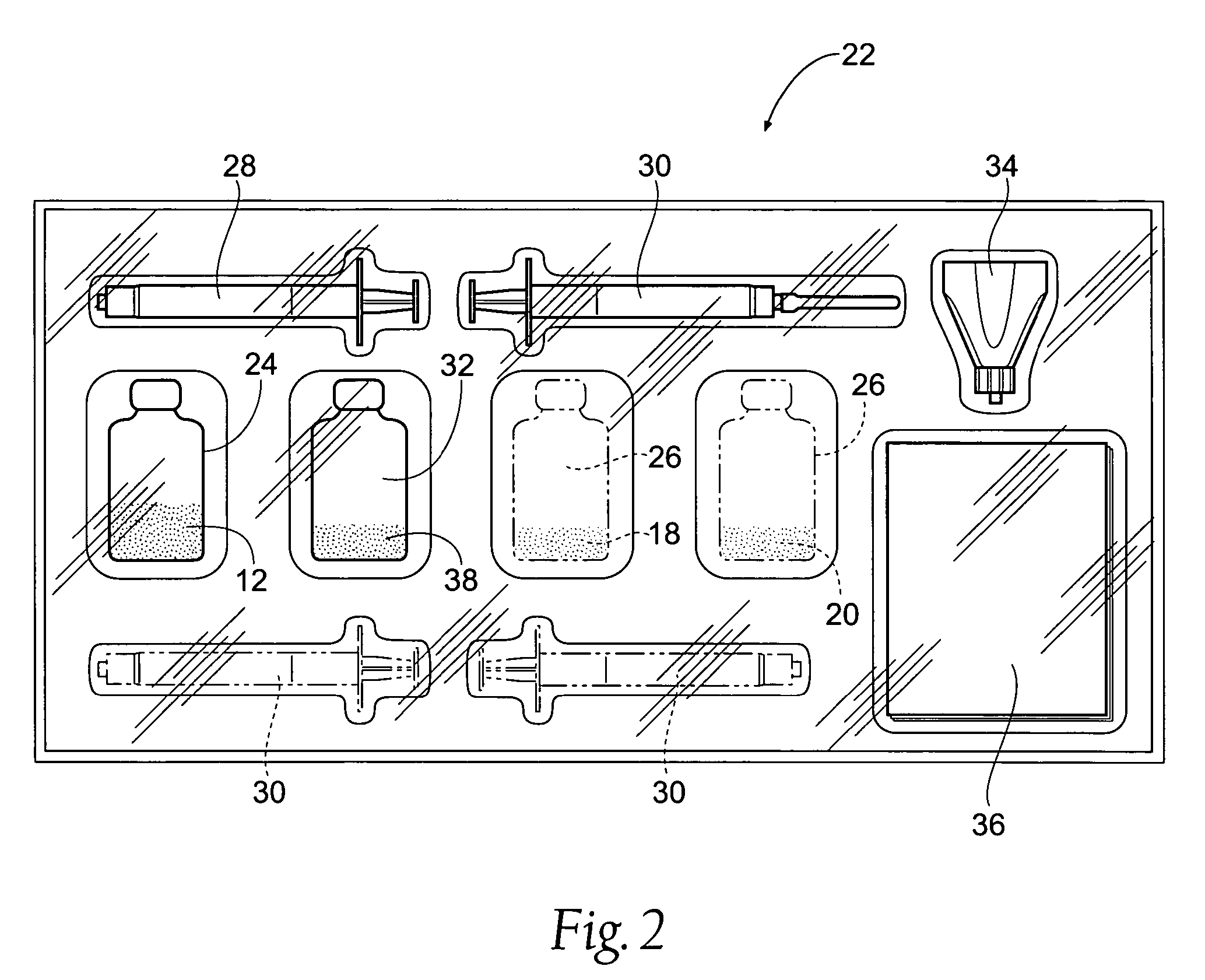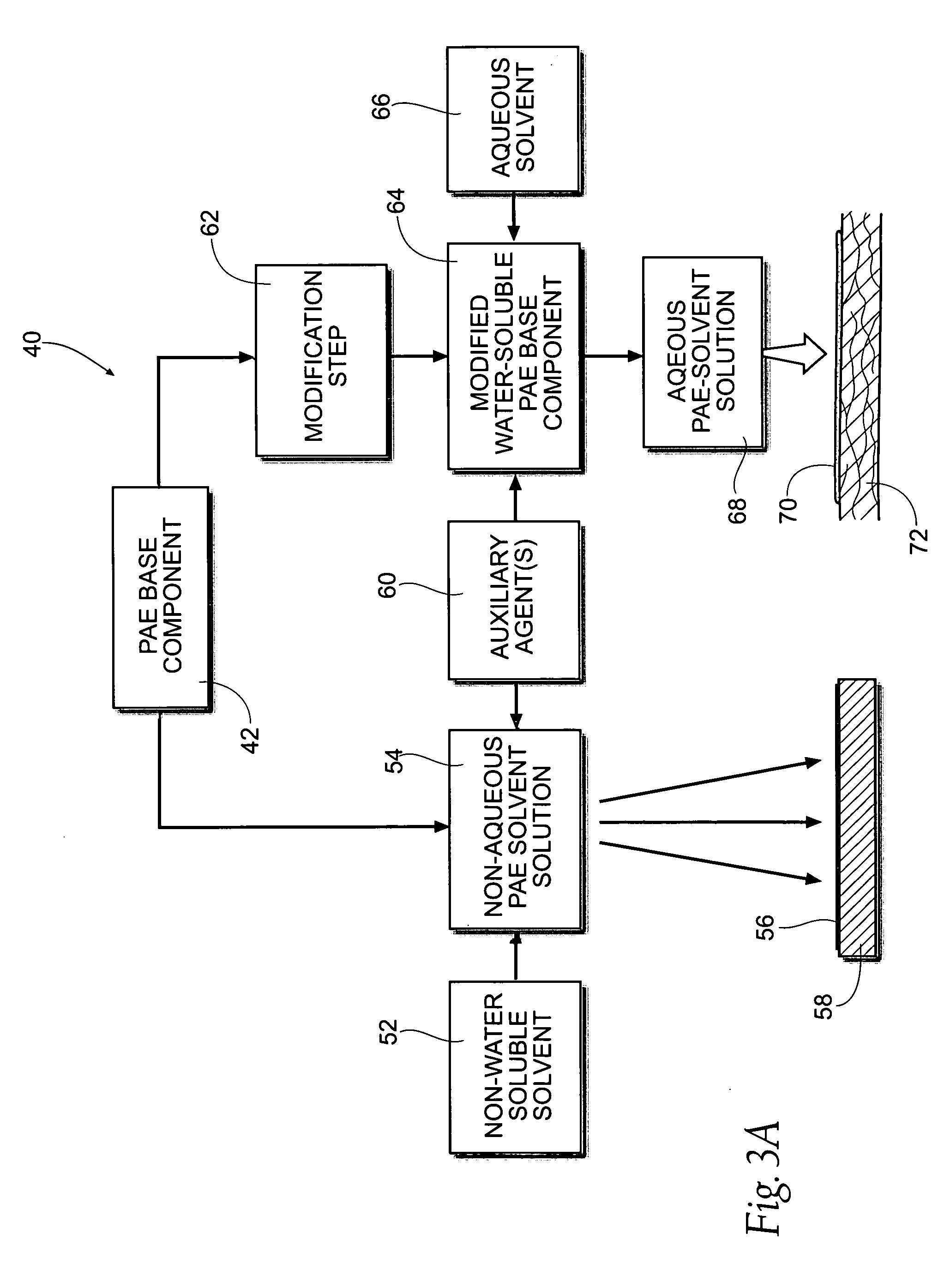Biocompatible hydrogel compositions
a technology of hydrogels and compositions, applied in the direction of drug compositions, peptide/protein ingredients, extracellular fluid disorder, etc., can solve problems such as biocompatible problems, and achieve the effect of cost-efficient system and reduced raw material supplies and costs
- Summary
- Abstract
- Description
- Claims
- Application Information
AI Technical Summary
Benefits of technology
Problems solved by technology
Method used
Image
Examples
example 1
Poly(anhydride ester) (PAE) Synthesis
[0079]
[0080] Polymerization temperature dependent upon monomer Td
[0081] Isolation by precipitation in CH2Cl2 / diethyl ether
[0082] Once synthesized, the genus PAE platform can be further formulated in various ways to perform diverse therapeutic functions, as shown in FIGS. 3A and 3B.
[0083] B. Non-Water Soluable, Biocompatible and Bio-Erodable PAE Compositions
[0084] The genus PAE component 42 synthesized according to Example 1 is not water soluable. For use (see FIG. 3A), the genus PAE component 42 can be placed into solution by mixing with a non-water-based solvent 52, e.g., acetone or methylene chloride, or TCE, to form a non-aqueous PAE-solvent solution 54. The non-aqueous PAE-solvent solution 54 can be applied, e.g., by spraying, dipping, or painting, to the surface of synthetic biocompatible material as a coating 56. The synthetic material can comprise plastic, or metal, or fabric, or ceramic. The synthetic material can be formed, e.g., in...
example 2
Method 1
Functionalization of Poly(anhydride ester)
[0106]
example 3
Method 2
Functionalization of Poly(anhydride ester)
[0107]
[0108] The resultant functionalized electrophilic PAE backbone can be linear (single functional or bi-functional) or branched (multifunctional). Multifunctional branches can be added to a single functional group, to impart multifunctionality.
[0109] The functionalized component 43 can be either non-water soluable or water soluable.
[0110] If the PAE base component 42 is not modified by a modification step 62 prior to being functionalized, the functionalized component 43 remains non-water soluable, and would pose difficulties if it is desirable to react the component 42 with other components that are soluable in water, for example, protein.
[0111] Conversely, if the PAE base component 42 is modified by a modification step 62 (of the kind previously described) prior to being functionalized, the functionalized component 43 will be water soluable and will readily react with other components, like protein, that are soluable in wat...
PUM
| Property | Measurement | Unit |
|---|---|---|
| pH | aaaaa | aaaaa |
| concentration | aaaaa | aaaaa |
| density | aaaaa | aaaaa |
Abstract
Description
Claims
Application Information
 Login to View More
Login to View More - R&D
- Intellectual Property
- Life Sciences
- Materials
- Tech Scout
- Unparalleled Data Quality
- Higher Quality Content
- 60% Fewer Hallucinations
Browse by: Latest US Patents, China's latest patents, Technical Efficacy Thesaurus, Application Domain, Technology Topic, Popular Technical Reports.
© 2025 PatSnap. All rights reserved.Legal|Privacy policy|Modern Slavery Act Transparency Statement|Sitemap|About US| Contact US: help@patsnap.com



